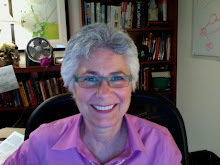this certainly seems to have been at play with OGP:
At the same time, course designers attempt to ?build? community through careful architecture in the belief that they are ?supporting the natural development of relationships? (Schwier, 2001, p. 6). In this construction, learners are pushed, not pulled, into a community framework, somewhat like an arranged marriage. As a result, studies of online community indicate varying levels of both communitybuilding efforts and conversely of conscious restraint on the parts of learners in contributing to community (Brown, 2001).
from Conrad, D. (2002) Deep in the Hearts of Learners: Insights into the Nature of Online Community, in Journal of Distance Education/Revue de l'enseignement à distance
http://cade.icaap.org/vol17.1/conrad.html
Tuesday, March 25, 2003
Best Practices for Online Community Building
Gilly Salmon describes 5 stages all participants go through:
1. students get the basics of technology and make first posts
2. socialization or the getting to know wach other stage "ice-breakers"
3. participants learn how to share info and get better about figuring out how to deal with amounts of info that are online
4. knowledge construction - "At this stage, participants begin to interact with each other in more exposed and participative ways. They formulate and write down their ideas or understanding of a topic. They read such messages from other participants and respond to them frequently and often successfully. As conferences unfold and expand, many (but not all) participants engage in some very active learning, especially through widening their own viewpoints and appreciating differing perspectives. Their grasp of concepts and theories is enhanced through the debate and by examples advanced by other participants. Once this process begins, it has its own momentum and power?."
5. Development - critical thinking skills come into play. participants responsible for their own learning. need little support
from "E-Moderating and In Good Company: The Secrets to Successful Learning Communities", a review by Michael Feldstein, CEO, Feldstein and Associates, in eLearn Magazine, http://www.elearnmag.org/subpage/sub_page.cfm?section=6&list_item=4&page=1
Best Practices for Online Community Building
When and why do humans share knowledge in general? If you can understand why people share knowledge under various every-day circumstances, then you can probably figure out how to get them to transfer their behavior to, say, an online learning environment or a business relationship.
there is the need to increase social capital, or "Social capital bridges the space between people. Its characteristic elements and indicators include high levels of trust, robust personal networks and vibrant communities, shared understandings, and a sense of equitable participation in a joint enterprise--all things that draw individuals together into a group. This kind of connection supports collaboration, commitment, ready access to knowledge and talent, and coherent organizational behavior."
from "E-Moderating and In Good Company: The Secrets to Successful Learning Communities", a review by Michael Feldstein, CEO, Feldstein and Associates, in eLearn Magazine,
http://www.elearnmag.org/subpage/sub_page.cfm?section=6&list_item=4&page=1

